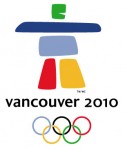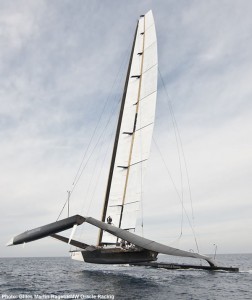 With a large part of the Olympic Winter Games in Vancouver now behind us, it is interesting to notice that the Games continue their unbridled growth both in terms of participating athletes and nations as well as in the number of events. However, this comes at a expense. Whereas since 1980 (Lake Placid) the number of athletes and events have increased by 2.5x and 2.3x respectively, the expenses related to the games have increased by a staggering 13x and when compared to 1984 (Sarajevo) even by 20x! This exponential increase is clearly not sustainable going forward. Since Lake Placid the number of events, athletes and nations has more than doubled.
With a large part of the Olympic Winter Games in Vancouver now behind us, it is interesting to notice that the Games continue their unbridled growth both in terms of participating athletes and nations as well as in the number of events. However, this comes at a expense. Whereas since 1980 (Lake Placid) the number of athletes and events have increased by 2.5x and 2.3x respectively, the expenses related to the games have increased by a staggering 13x and when compared to 1984 (Sarajevo) even by 20x! This exponential increase is clearly not sustainable going forward. Since Lake Placid the number of events, athletes and nations has more than doubled.
Vancouver, Canada is the pride host of the XXI Olympic Winter Games. After Calgary, it is the second time Canada is hosting the games. Since then a lot has changed, but what has not changed is that the Winter Games are continuing to witness unbridled growth in terms of events, countries, participating athletes, participating officials, TV coverage and revenues and expenses. So far the end is not in sight, albeit that growth is slowing down. This should not be surprising given the fact that two sources of growth seem to slowly get saturated. The increase in the number of participating countries is slowing down and more importantly the growth in the number of participating athletes and events is coming down. The table below shows that since Lake Placid in 1980 the number of participating countries, the number of athletes and the number of events has more than doubled, implying that compounded growth for each time Winter Games were organized on average exceeds the 10% figure. As can be seen the Torino and Vancouver Games have witnessed significant lower growth.
| Year | Host City | Country | Countries | % chg | Athletes | % chg | Events | %chg |
| 1924 | Chamonix | France | 16 | 290 | 16 | |||
| 1928 | St Moritz | Switzerland | 25 | 56% | 360 | 24% | 14 | -13% |
| 1932 | Lake Placid | USA | 17 | -32% | 280 | -22% | 14 | 0% |
| 1936 | Garmish | Germany | 28 | 65% | 760 | 171% | 17 | 21% |
| 1948 | St Moritz | Switzerland | 28 | 0% | 810 | 7% | 22 | 29% |
| 1952 | Oslo | Norway | 32 | 14% | 730 | -10% | 22 | 0% |
| 1956 | Cortina d’Ampezzo | Italy | 32 | 0% | 920 | 26% | 24 | 9% |
| 1960 | Squaw Valley | USA | 30 | -6% | 650 | -29% | 27 | 13% |
| 1964 | Innsbruck | Austria | 36 | 20% | 930 | 43% | 34 | 26% |
| 1968 | Grenoble | France | 37 | 3% | 1290 | 39% | 34 | 0% |
| 1972 | Sapporo | Japan | 35 | -5% | 1130 | -12% | 35 | 3% |
| 1976 | Innsbruck | Austria | 37 | 6% | 1260 | 12% | 37 | 6% |
| 1980 | Lake Placid | USA | 39 | 5% | 1280 | 2% | 38 | 3% |
| 1984 | Sarajevo | Yugoslavia | 49 | 26% | 1490 | 16% | 39 | 3% |
| 1988 | Calgary | Canada | 57 | 16% | 1550 | 4% | 46 | 18% |
| 1992 | Albertville | France | 64 | 12% | 1800 | 16% | 57 | 24% |
| 1994 | lillehammer | Norway | 67 | 5% | 1730 | -4% | 61 | 7% |
| 1998 | Nagano | Japan | 72 | 7% | 2180 | 26% | 68 | 11% |
| 2002 | Salt Lake City | USA | 77 | 7% | 2400 | 10% | 78 | 15% |
| 2006 | Torino | Italy | 80 | 4% | 2500 | 4% | 84 | 8% |
| 2010 | Vancouver | Canada | 82 | 2% | 2632 | 5% | 87 | 4% |
.
The table below gives some more detailed information. Whereas in the past travel to another continent had an impact on the number of participating nations, this seems no longer the case. This is partly due to the fact that the IOC is subsidizing smaller exotic countries that want to participate. These smaller countries are only a small reason behind the enormous growth in the number of athletes. More important growth drivers are the growth in the number of female athletes and the number of events. When looking at the number of women that participate in the Games, we notice that since Lake Placid this number has increased by 355%, whereas the number of participating men only increased by 87%. Also in absolute terms the number of women has grown more rapidly. This is partly due to the increase in the number of events for women, which brings us to another growth driver. Both the number of men’s events and women’s events has more than doubled over this period. New popular events like snowboarding and snow cross have been added, whilst almost all events are now both for women and men. Clearly the new sports will continue to play an important role for the growth in the future. The success of the winter X-games shows the need for action sports and by allowing sports such as boarding and snow cross (which everybody seems to embrace), the IOC is aiming to embrace the younger generations. Ironically, in absolute numbers, the number of team officials has grown the most and now exceeds the number of athletes.
| LakePlac. | Sarajevo | Calgary | Albertv. | Lilleh. | Nagano | SaltLake | Torino | Vancouver | |
| 1980 | 1984 | 1988 | 1992 | 1994 | 1998 | 2002 | 2006 | 2010 | |
| Countries present | 39 | 49 | 57 | 64 | 67 | 72 | 77 | 80 | 82 |
| % change | 26% | 16% | 12% | 5% | 7% | 7% | 4% | 2% | |
| Events | 38 | 39 | 46 | 57 | 61 | 68 | 78 | 84 | 86 |
| % change | 3% | 18% | 24% | 7% | 11% | 15% | 8% | 2% | |
| Men’s events | 24 | 24 | 28 | 32 | 34 | 37 | 42 | 45 | 45 |
| % change | 0% | 17% | 14% | 6% | 9% | 14% | 7% | 0% | |
| Women’s events | 12 | 13 | 16 | 23 | 25 | 29 | 34 | 37 | 39 |
| % change | 8% | 23% | 44% | 9% | 16% | 17% | 9% | 5% | |
| Male athletes | 839 | 1000 | 1110 | 1312 | 1215 | 1389 | 1513 | 1548 | 1572 |
| % change | 19% | 11% | 18% | -7% | 14% | 9% | 2% | 2% | |
| Female athletes | 233 | 274 | 313 | 489 | 522 | 788 | 886 | 960 | 1060 |
| % change | 18% | 14% | 56% | 7% | 51% | 12% | 8% | 10% | |
| Total athletes | 1072 | 1274 | 1423 | 1801 | 1737 | 2177 | 2399 | 2508 | 2632 |
| % change | 19% | 12% | 27% | -4% | 25% | 10% | 5% | 5% | |
| Team officials | 920 | 1417 | 917 | 1888 | 1821 | 1468 | 2100 | 2704 | 2850 |
| % change | 54% | -35% | 106% | -4% | -19% | 43% | 29% | 5% |
.
Costs have grown exponentially. It should also be interesting to see how the games have done financially. In the table below the revenues, costs and profits are summarised in USD and at constant 2000 prices using the 2000 price index. Two quick conclusions can be drawn: 1. the figures (which exclude investments related to the venues and infrastructure) clearly indicate that the organising committees of the Olympic Winter Games have realised a deficit in most of the cases; 2. The increase in both revenues and costs have grown far more rapidly than the number of participants in the games. The Vancouver Games (we have used the budget numbers) are likely to be the most expensive; Vancouver 2010 is likely to be almost 13x more expensive in terms of costs than Lake Placid 1980 and even 20x more expensive than Sarajevo 1984. This is an astonishing increase when compared to the increase in the number of athletes (2.5x) and the number of events (2.3x). When allocating total expenses over the number of athletes active in the game, it implies that costs per athlete has risen by 414% from USD 107,612 to USD 553,171 using constant 2000 prices. Of course there are plenty of explanations, but it is clear that this exponential cost increase cannot continue in the future!
| Lake Pl. | Sarajevo | Calgary | Albertv. | Lilleh | Nagano | Salt Lake | Torino | Vancouver | |
| 1980 | 1984 | 1988 | 1992 | 1994 | 1998 | 2002 | 2006 | 2010 | |
| Revenues (USDm) | 97.6 | 277.81 | 626 | 800 | 525 | 1050 | 1264 | 1300 | 1456 |
| % change | 185% | 125% | 28% | -34% | 100% | 20% | 3% | 12% | |
| Costs (USDm) | 115.36 | 72.93 | 590 | 859 | 868 | 1002 | 1317 | 1333 | 1456 |
| % change | -37% | 709% | 46% | 1% | 15% | 31% | 1% | 9% | |
| Profit or loss | -17.76 | 204.88 | 36 | -59 | -343 | 48 | -53 | -33 | 0 |
| Costs per athlete USD | 107612 | 57245 | 414617 | 476957 | 499712 | 460266 | 548979 | 531499 | 553171 |
 Looking back at the 33rd edition of the Americas Cup, the conclusion is one of mixed feelings. In disgust over the countless courtcases, fights, manipulation, postponements and enormous egos of the two owners of both syndicates. In awe of watching the magnificent display of technology and raw power of the BMW Oracle and to a less extent Alinghi. And full of enthusiasm when watching the actual race. That pretty much sums it up. Clearly, awe and enthusiasm have taken the upper hand during the last week. In that perspective it is sad to conclude that the 33rd Americas Cup will likely end up in the history books as one of the most controversial ones, very similar to the Americas Cup of 1988, when Dennis Connor won the cup with his Stars and Stripes. It is to hope that, again similar to what happened after1988, the 34th Americas Cup will regain some of its lost reputation, a big responsibility for the parties involved.
Looking back at the 33rd edition of the Americas Cup, the conclusion is one of mixed feelings. In disgust over the countless courtcases, fights, manipulation, postponements and enormous egos of the two owners of both syndicates. In awe of watching the magnificent display of technology and raw power of the BMW Oracle and to a less extent Alinghi. And full of enthusiasm when watching the actual race. That pretty much sums it up. Clearly, awe and enthusiasm have taken the upper hand during the last week. In that perspective it is sad to conclude that the 33rd Americas Cup will likely end up in the history books as one of the most controversial ones, very similar to the Americas Cup of 1988, when Dennis Connor won the cup with his Stars and Stripes. It is to hope that, again similar to what happened after1988, the 34th Americas Cup will regain some of its lost reputation, a big responsibility for the parties involved. Last week first division club HFC Haarlem filed for bankruptcy, no longer being able to fulfill its financial obligations. This should come as no surprise. Several clubs are in dreadful financial condition, mostly on the back of poor management and unfavorable economic conditions. Hence we expect more casualties along the way. We briefly explain and suggest some solutions.
Last week first division club HFC Haarlem filed for bankruptcy, no longer being able to fulfill its financial obligations. This should come as no surprise. Several clubs are in dreadful financial condition, mostly on the back of poor management and unfavorable economic conditions. Hence we expect more casualties along the way. We briefly explain and suggest some solutions.